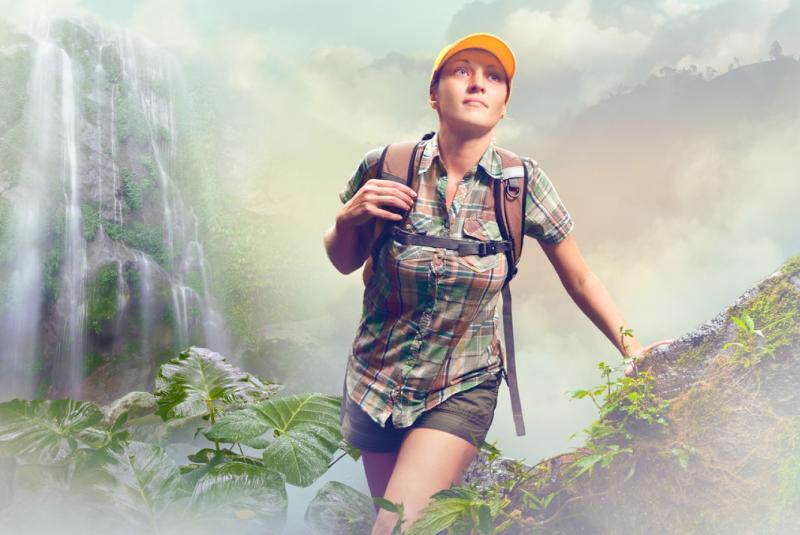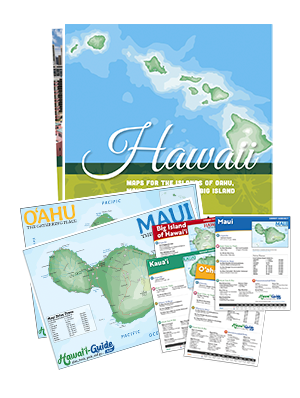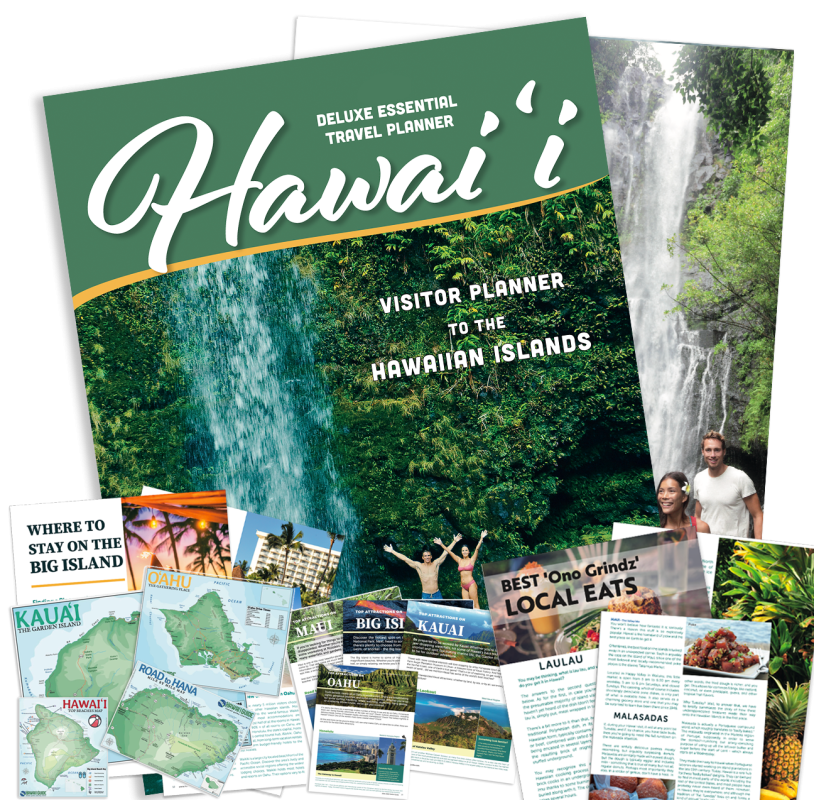Nature- and Culture-Based Tourism
How you affect Hawaii's Ecosystems
Name a place that is highly esteemed for its cultural and ecological wonders, revered for its breathtaking beauty, and treasured for its natural splendor, and Hawaii will surely be at the tip of your tongue. From the summit of Mauna Kea to the depths of the island’s coral reefs, Hawaii is replete with environmental marvels that draw millions of visitors each year. In fact, tourists outnumber residents by about 6:1- specifically, 8.3 million people visited Hawaii in 2014 (the most recent statistics available as of this writing). These numbers obviously impact the state’s economy; but their impact on Hawaii’s ecology is, arguably, even greater.
— article continued below —
2024 Hawaii Visitor Guides
Visiting Hawaii soon? Be sure to grab a copy of one of our updated Hawaii Visitor Guides.
~ Trusted by Millions of Hawaii Visitors Annually ~
Enter ecotourism. The Hawaii Ecotourism Association defines this type of travel and adventure as “nature- and culture-based tourism that is ecologically sustainable and supports the well-being of local communities”. This means that simply put, your visit should minimally impact the plants, animals, ocean, air, and people you encounter during your time as a guest. And, like any good guest, you should strive to make your visit as positive as possible for your gracious host.
We all know that it’s just good practice to be an agreeable guest, but in the case of Hawaii’s tourism industry, it is of the utmost importance that we understand how our actions affect the state’s fragile ecosystems and why it’s so important to care for them.
Hawaii is home to approximately 150 different ecosystems, many of which are so unique that the islands form their own distinct global bioregion. These ecosystems range from subterranean lava tube systems to snowy alpine deserts, to tropical dry forests, and windy coastal dunes. Unfortunately, many of these ecosystems are in trouble- with some estimates that nearly half are in peril. Many have been negatively affected by human-related changes in the landscape, whether through the introduction of non-native plants and animals, habitat loss, climate change, or the exploitation of resources. This is especially concerning because over 90% of Hawaii’s flora and fauna is endemic- the highest rate of any place on the planet.
Sadly, the Aloha State also has another distinction: it is known as “The Endangered Species Capital of the World”, as at least 1/3 of all endangered species in the U.S. make their homes here. The state also holds the title of “Bird Extinction Capital of the World”, as at least 71 of 113 bird species found nowhere else on Earth have become extinct; with 33 of the remaining 42 on the Endangered Species List- 10 of which haven’t been seen in over a decade and are likely extinct.
Additionally, Hawaii’s delicate coral reef system is threatened by several factors, including misuse by visitors. The state’s living reef ecosystem encompasses 410,000 acres- that’s greater than Oahu’s total landmass. Yet, worldwide, reefs make up less than 1% of the underwater ecosystem, but help protect 25% of all marine species. The Hawaiian reefs are often referred to as the “rainforest of the sea”, as they play host to over 7,000 known species of plants and animals; more than 1,250 of which can be found solely within these Hawaiian ecosystems. Not only do we need to protect the coral reefs for the direct benefit of these marine species, but also for the health of our shorelines, in order to support sustainable fisheries, to keep the sustainable tourist industry healthy, and to be able to responsibly enjoy these undersea wonders for generations to come. If that weren’t enough, did you know that many of our medical treatments come directly from resources found in the world’s oceans? Drugs used to treat asthma, arthritis, and cancer can be traced to marine sources. In fact, a leading coral reef ecologist posits that we are 300-400 times more likely to discover new drugs from our oceans than on land.
Basically, without coral reefs, Hawaii simply would not be Hawaii:
- Without the reefs, there would be no beaches. Beach sand is comprised mainly of coral fragments, urchin, shell, and calcified algae, as well as other tiny organisms in the ocean.
- Reefs make Hawaii a big wave surfer’s dream. The shape of the reefs helps determine the size of the waves. Without reefs, the state’s world famous breaks would not exist.
- Thanks to the reefs, Hawaii is home to millions of species of marine life, many of which can be found nowhere else on the planet. Reefs provide food and shelter that fish need to survive and thrive- no reef, no fish.
- Hawaii’s tourist industry can thank the reefs for helping make it one of the world’s top tourist destinations. Beautiful beaches, SCUBA, snorkeling, and diving rank as some of the most popular visitor activities.
- Because of the reefs, native Hawaiians were outstanding watermen/women and excelled at being reef stewards. Reefs provided food, leisure activities, and spiritual well-being that formed the basis of the Hawaii we enjoy today.
Guide Of US-Hawaii Partners
Committed to Sustainability and Conservation
Conserving the state’s fragile ecosystem is imperative, and we here at Hawaii Guide strongly believe that we are all stewards of this magical place. As such, we have a responsibility to malama pono Hawaii nei- care rightly for Hawaii; and being ‘green’ is the best way to conserve the state’s natural and cultural riches for future generations of plants, animals, and humans, all of whom depend on Hawaii’s delicate ecosystems. We are proud of our partnerships with tour companies and activity providers that are committed to sustainability and conservation, and to making sure you have an incredible adventure. We encourage you to support them:
Staffed by a team of professional, knowledgeable, and friendly guides, Hawaiian Paddle Sports provides exceptional experiences and empowers their guests to develop a deeper understanding of and appreciation for Hawaii’s marine life. Best of all, they are certified by the Hawaii Ecotourism Association as an Ecotour Company. They are also a B Corp certified business for their high social, environmental, and community standards; giving back is an integral part of their business philosophy.
Their mission is to explore the beauty of Maui, connect with a spirit of adventure, and inspire a lasting respect for our oceans and their inhabitants. All of their guides are Certified Marine Naturalists who have a vast knowledge of all aspects of Hawaii’s marine life and are pleased to share their love of the environment with you. Maui Kayak Adventures is a sister activity to Hawaiian Paddle Sports and shares their values and dedication to sustainability and commitment to giving back to the community. Both of these companies are proud of their efforts and achievements
read more...- Certified Eco-Friendly by the Hawaiian Ecotourism Association
- They are members of the Surfrider Foundation Maui Chapter and actively assist in reef and beach cleanups and water and safety patrols
- They do not use plastic water bottles on tours, opting for stainless steel bottles and filtered water as part of their efforts in the Rise Above Plastics campaign
- At the beach and on the water, guides collect any marine debris such as fishing gear, plastic bags, or rope which can injure or kill wildlife
- Guides educate visitors about the fragile reef and marine environment and how to protect and conserve it
- They make every effort not to disturb wildlife, such as pulling octopus from their homes or touching turtles, seals, etc., both for the safety of guests and wellbeing of marine life
- Guides are committed to being as culturally sensitive as possible, providing accurate information or saying ‘I don’t know’, rather than giving misinformation about Hawaiian culture
As Maui’s only luxury Hana tour company that goes to Hana and continues on the road past Hana, Valley Isle Excursions stands out from the rest- their hotel pick up service, luxury custom cruisers, frequent and long stops, and delicious breakfast and lunch consistently earn high marks. So does their approach to business, which is guided by their commitments to principles of leadership, transparency, inclusivity, integrity, stewardship, and continuous improvement. Their successes include
read more...- Certified by the Hawaii Ecotourism Association for their dedication to protecting the environment and their knowledge of Hawaiian culture
- Vigorous recycling efforts regarding cans, bottles, oil containers, and oil waste products
- Recycling purged water from ice machines for cleaning, etc. through a 7-stage reverse osmosis process
- Avoiding use of paper whenever possible, such as sending documents via email
- Keeping their office and vehicle energy use low
- Recycling equipment such as computers by donating to local nonprofits
- Purchasing products with a lower environmental impact, such as hand soaps and van cleaning products
- Providing thousands of dollars of pro bono work to local communities
- Supporting fish ponds, hale building, and traditional rock wall building and restoration

















